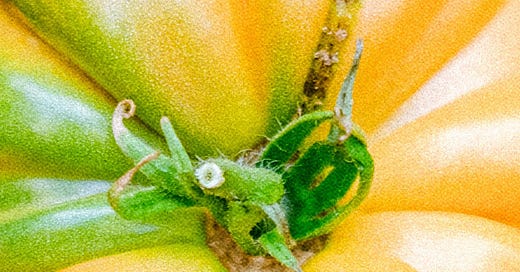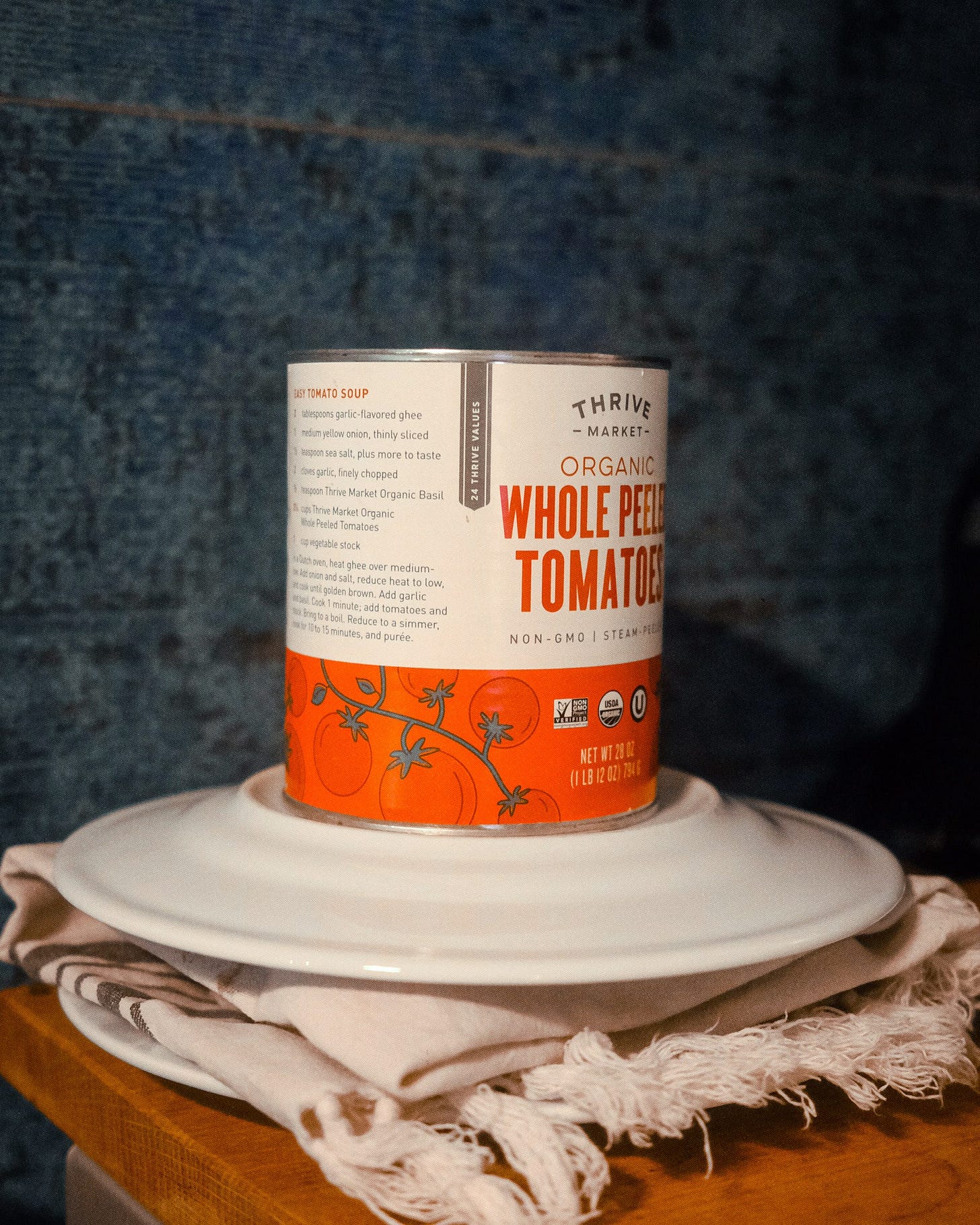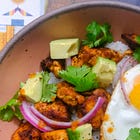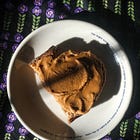This newsletter contains affiliate links, meaning I may earn a small commission from items you buy, at no cost to you.
So, you read last month’s Home Food and have stopped buying meat (or reduced your consumption). Now, how do you become a healthy vegetarian?
I’ve been a vegetarian for 15 years. I began as a typical pasta-and-cheese vegetarian, but as I learned to cook, I became more thoughtful, intentional, and healthier. I try to eat a diet low in UPF, and though I appreciate a plant-based patty at a backyard barbecue, I never buy meat replacements. I don’t think about veganizing meat-based meals; instead, I seek out plant ingredients and cook them so they shine!
In addition to the environmental reasons, there are many benefits to a vegetarian diet: health, cost, and ease. I love that I don’t have to worry about raw chicken germs in my kitchen and have, knock on wood, never gotten food poisoning.
Here’s everything I’ve learned:
The protein problem
Everyone loves to scream about protein right now! Protein is essential, but so is every other nutrient! The most important thing about a balanced diet is the balance—as long as you eat a range of fruits, vegetables, whole grains, and legumes daily, you are good.
But I get it, I’m an active, anemic vegetarian—I feel the acute impact of a diet low in protein and iron. I don’t track macros or calories because it seems like a slippery slope into obsession, and I already have enough to track and worry about myself. However, I tracked grams of protein a few years ago out of curiosity. I discovered I was meeting or exceeding the requirement for my weight (here’s a handy USDA calculator that can determine needs based on weight and activity), and my yearly bloodwork has placed me in a healthy range.
Also, I get hungry when I don’t consume enough protein! If I’m hungry an hour after a meal, that’s a sign I need to eat something with protein and fiber. It can be that simple.
(I’ll make the disclaimer that I am not a dietitian. Please talk to a professional if you’re an athlete, do a lot of weight training, or have a unique health situation.)
Protein sources
First, your body doesn’t know the difference between complete plant and animal protein. I’m the first one to screech about the quality of ingredients, but as long as the plant protein comes from whole food sources, ideally organic, you’re good. Second, soy is an amazing legume. Remember, there is a difference between traditional “processed” foods and ultra-processed foods. Tofu and tempeh are whole foods. Third, there is no hormonal concern in eating soy products like soy milk or tofu every day.1
And if you’re concerned about GMO soy, you should feel comfortable that the GMO soy grown in the U.S. goes to animal feed. If you eat meat, you eat more GMO soy than I do, and you can avoid Monsanto GMO soy by buying organic soybean products.
I eat beans, tofu, or tempeh every day. I eat eggs, full-fat yogurt, and cheese daily, along with nuts, seeds, and whole grains. Between all of this, I eat enough protein.
Tofu
I love tofu. Although it can be unfairly maligned as bland or oddly textured, when cooked and seasoned correctly, it is so, so good.
There are several kinds of tofu—silken and a range of soft to extra firm. Silken tofu has a delightful pudding-like texture that can be whipped into sauces or smoothies. My favorite five-minute dinner is this cold Silken Tofu by Hetty Lui McKinnon with rice.
The firmer the tofu, the more protein it contains because it’s more dense. I typically buy firm or extra-firm tofu because it’s more versatile to cook with. Here in New York, I buy Fresh Tofu Inc tofu from Farm to People or Ithaca Soy tofu from Precycle (and delightfully packaging-free!). Also, the fresh tofu from Fong On in Chinatown is delicious; it’s worth the errand when in the neighborhood. For a mainstream option in the U.S., House Foods (organic) is great.
Tofu needs to be pressed for 15 to 30 minutes. I typically wrap it in a clean dish towel between two small plates with a can of tomatoes balanced on top.
One way to make tofu more approachable is to tear it into pieces rather than cutting it into cubes. The organic shapes are more natural, and the scraggly edges give more opportunity for crispy texture (this is what I do for my tofu rice bowl).
Opened tofu needs to have its water changed every day, but unopened tofu can stay good in the fridge for weeks. You can also freeze it, though its texture changes when thawed. It becomes more sponge-like, which I like! Tofu can be eaten uncooked.
You can make tofu at home, though it requires several steps. I picked up Andrea Nguyen’s book, Asian Tofu, a few months ago and am looking forward to trying to make my own.
A few of my favorite tofu recipes:
Usually some variant of marinated baked tofu, like this one
Beans
I try to eat beans every day. I’m in the Bean Club, and I cook a pound each week to keep up with my shipments. Since it’s just the two of us, I typically freeze half of the cooked beans.
I have a tough time digesting the phytic acid in beans, so I rarely eat legumes that I didn’t cook myself. I’ve found that pre-soaking beans in cool water with 1 to 2 tablespoons of apple cider vinegar (via the great book Ferment by Holly Davis) makes them markedly more digestible. I cook them on the stove following the Rancho Gordo method. I typically add a whole head of garlic, raw onion, a bay leaf, and a few glugs of olive oil. I salt after the beans have started to soften.
I usually make utilitarian beans, like chickpeas or black beans, in the Instant Pot (also soaked before cooking). If you’re not ready to advance to home-cooked beans, I like the cartoned/canned beans from Jack’s Quality Beans or Eden Foods.
A few of my favorite bean recipes:
Eggs
Farm-fresh chicken eggs are a big part of my diet. During spring and winter, I buy eggs from Farm to People, and in the summer and fall, I get eggs from our CSA via Lehrer Farm or Dragonfly Pond.
If I buy eggs from a grocery store, I look for “free-range” and local. Organic feed is great, but I would choose free-range and local eggs before a store-bought organic egg. I am more concerned about the chicken’s well-being.
Tempeh
Tempeh is an Indonesian product made from fermented soybeans. I like its nutty and mushroomy flavor and find it has a nicer bite and firmer texture than tofu. I prefer tempeh to tofu for tacos and love it as a meat replacement in sandwiches.
Tempeh should be cooked thoroughly, but don’t be concerned if you see black specks; this is a mold-fermented product after all. (Though, do look out for colorful spots). I recommend seeking out local or artisan tempeh; I think it tastes better. I like Rhapsody Foods.
A few of my favorite tempeh recipes:
I usually DIY it, but a tempeh taco like this
Again, I DIY but a marinated tempeh like this for tempeh sandwiches
Yogurt
I make yogurt in our Instant Pot with locally-sourced full-fat creamline milk. Yogurt also contains natural probiotics.
Cheese
One of my goals is to divest from store-bought cheeses. We’re lucky to have Murray’s Cheese here in New York City, and I often pick up their cheddars from Chicky’s General Store or Farm to People. I also buy parm and pecorino from Farm to People.
Seeds and nuts
I always have flax, chia, and hemp seeds on hand. I add flax and hemp to smoothies, and chia seeds to yogurt, cottage cheese, and rice bowls. Hemp seeds can be sprinkled into yogurt, too.
I eat a lot of homemade peanut butter, usually on sourdough toast but also with sliced apples or just by the spoonful! We also have cashews, almonds, walnuts, and hazelnuts around, which, when toasted, are great for snacking or bulking up green salads or pasta.
Whole grains
Quinoa and brown rice have protein and are a nice complement to beans or soybean products.
Miscellaneous
Other plant protein sources include seitan (a wheat product), which I like but don’t keep around the house. Textured vegetable protein (TVP) is a dried soybean product that can be revived into a lovely chorizo-like “meat.” Still, I prefer less processed soybean products like tofu or tempeh.
10 ways to add non-meat protein to your diet
Add a boiled, fried, or egg
Add hemp and/or flax seeds to smoothies
Add soy milk to smoothies
Add whey or vegan protein powder to smoothies
Add chia seeds to cottage cheese, peanut butter toast, and rice bowls
If you’re looking for a dairy milk alternative, soy milk is the least processed and highest in protein
Eat nuts—peanut butter toast
Eat lots of legumes or lentils
Eat Greek yogurt with honey and fruit for dessert
Thicken soups with quinoa or bulghur
Supplements et cetera
I only take dietary supplements that a doctor (or herbalist) has prescribed, which for me are iron and vitamin D. The supplement industry in the U.S. is unregulated. I think it’s prudent not to ingest anything where sourcing is opaque (the same goes for supplements via drop shippers on Amazon—I only buy supplements from iHerb, pharmacies, or the manufacturer). Maybe there’s nothing bad going on and you’re just peeing out the excess vitamins, but that’s also a waste of money and plastic packaging.
Most vegans will need to take vitamin B12. Since I am anemic, I take an iron supplement that has B12 in it, but I eat eggs, oysters, dairy, cheese, and nutritional yeast. I could probably get away without the B12 supplement, but talk to your doctor about your situation and get your bloodwork done.
Cookbooks and vegetarian recipes
Part of the reason my cookbook rule came about was because of all these damn meat recipes. It’s disappointing to pick up a cookbook in 2025 while we careen on the edge of a climate crisis and see 50% + meat recipes. With a few exceptions, I only buy vegetarian or vegan cookbooks.
Recipe developers I seek out:
These are my favorite cookbooks:
Anything by Anna Jones, though my favorite is A Modern Cook’s Year
My random vegetarian tips
Around the 3-year mark, I completely stopped craving meat. What I craved was usually processed—hot dogs, chicken strips, and salty bacon. Occasionally, I’ll indulge in a processed vegan meat product like Sweet Chick’s fake chicken sandwich or a vegan hot dog to satisfy this craving (it works!).
I do my best to avoid meat, but I won’t return a dish because of a little fish sauce or worry if my food was cooked near meat dishes.
I think store-bought plant-based meat can be a positive gateway drug to vegetarinism, but learn to make bean burgers instead! They taste a million times better. The same goes for veggie restaurant burgers.
Even if you’re not vegan, search out vegan restaurants when traveling—they are more common than vegetarian restaurants.
Related:
More information on soy and eating soy every day in this great podcast by registered dietitian, Desiree Nielsen.









I love a good bean or vegetable patty burger, and get sad that so many restaurants that used to have great bean patties are switching over to the impossible burger instead.
You put in the work! Love this and will be saving some of these recipes. Thanks for sharing